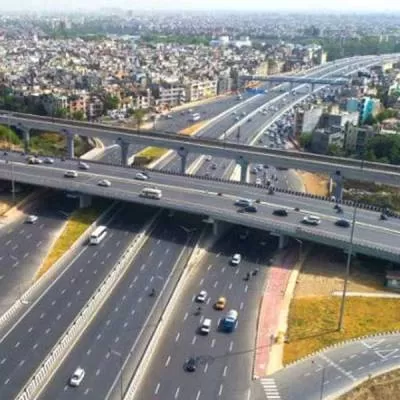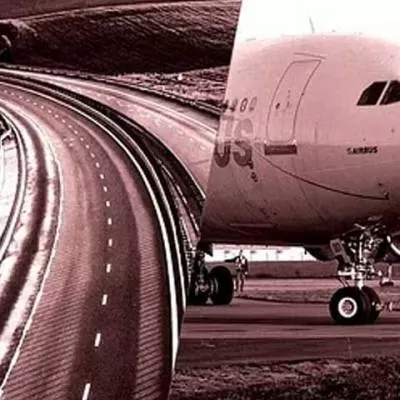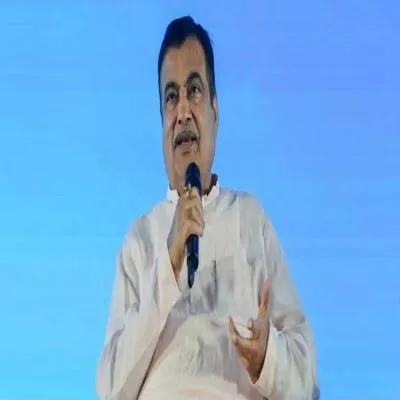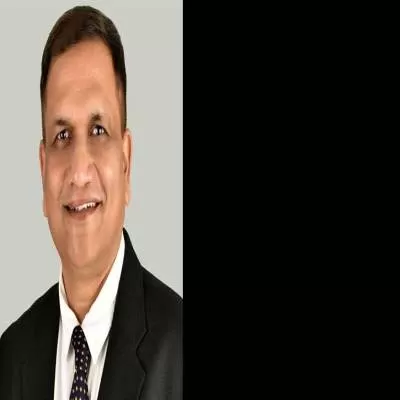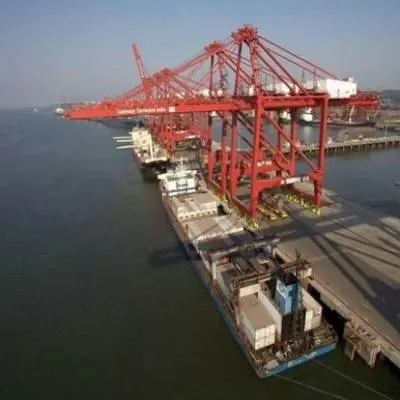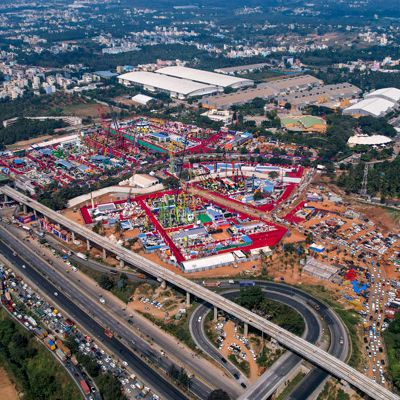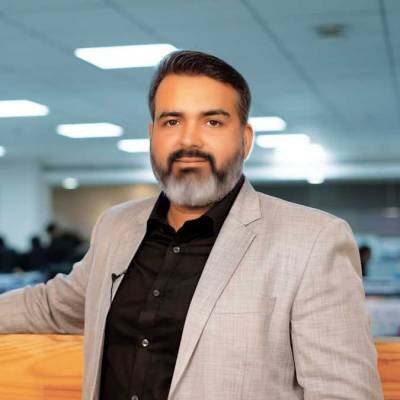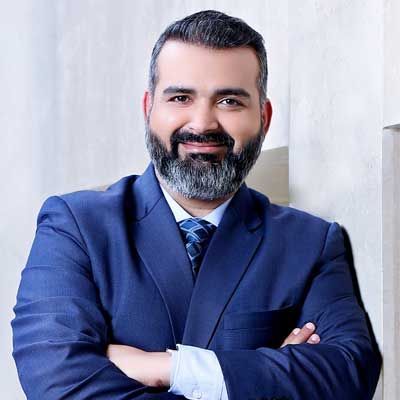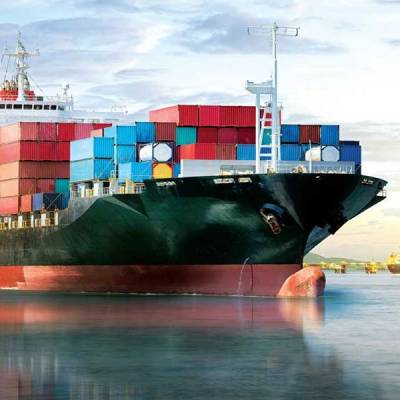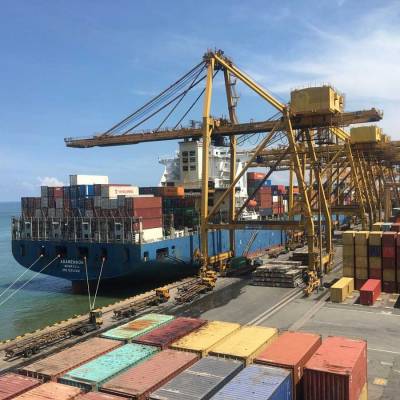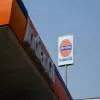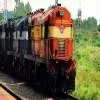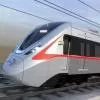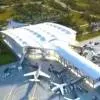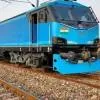- Home
- Infrastructure Transport
- PORTS & SHIPPING
- Bharat Mala is worth Rs.10 lakh crore; we want to start projects worth Rs.3 lakh crore under Phase-I in 2018

Bharat Mala is worth Rs.10 lakh crore; we want to start projects worth Rs.3 lakh crore under Phase-I in 2018
Focus, zeal, vigour - these qualities, incredibly evident in this minister, have contributed to his extensive mandate. Indeed, Nitin Gadkari, Minister for
Road Transport & Highways, Shipping and Water Resources, River Development & Ganga Rejuvenation, Government of India, has been on a development spree; testament to this is the progress in the roads sector. 'Prove it, before you point a finger at my ministry,' he says, throwing down the gauntlet. 'I have done it before claiming it and the results in the roads and highways sector are evident.' He is certain on achieving the 40 km per day target. What's more, the Bharatmala and Sagarmala programmes have added fuel to his fire. In an exclusive, early-morning interview with SHRIYAL SETHUMADHAVAN and RAHUL KAMAT at his Mumbai residence, Gadkari elaborates upon the opportunities - tendering and targets - that these mega programmes will bring.
What measures are being taken to ensure the transparent and corruption-free execution of the Bharatmala programme?
In the past three-and-a-half years, my department has awarded over Rs 7.50 lakh crore worth of projects. And every work has been awarded in complete transparency. Not a single contractor has had to come to the ministry to clear his project. Our department is fully transparent, corruption-free, time-bound and quality-conscious. We have adopted a faster decision-making process and follow a zero-tolerance policy against corruption. In this time, there has not been a single allegation of corruption against my department or projects; not a single contractor has been bribed for his project to be cleared. When I had taken charge as minister, there were 403 stalled projects worth Rs 3.85 lakh crore and it was a big challenge for all the contractors. But my department set a track record of saving bankers in India non performing assets (NPAs) worth Rs 3 lakh crore. We take 22 cabinet discussions and the project report is reviewed at least 50 to 60 times. This is followed by general body meetings with bankers, contractors, consultants, engineers and architects, land acquisition officers from the state, environment and forest clearances, and then the project is cleared. So, we are 100 per cent transparent in our process and no one can make any allegations against me.
You plan to achieve Rs 25 lakh crore of works in highways and shipping in the next five years...
First, one needs to understand how we will implement this programme. The Sagarmala project will attract Rs 16 lakh crore of investment. In this, Rs 4 lakh crore is related to port mechanisation, modernisation and greenfield ports. The rest is port-road connectivity and port-rail connectivity. Today, we have already awarded more than
Rs 1.80 lakh crore in the port sector. We have commenced railway works and road connectivity projects too. Of the Rs 4 lakh crore, projects worth Rs 30,000-40,000 crore are in the tendering process. And, now we are expecting Rs 12 lakh crore in port-led development. Also, there are 40 industrial clusters and economic zones and we are making three ports as smart cities. There are already four smart cities and the work has also started.
For instance, we are making SEZs at Mumbai JNPT. For this, 22 players have already offered to invest. In the the JNPT SEZ alone, we are expecting an investment of Rs 60,000 crore, which is already finalised, and employment for 125,000.
In particular, in the port-led development area, we are working towards skill development. Further, one major policy pending with the Cabinet is the commercial vehicles and car scrapping policy; passing this will develop our automobile sector. The present automobile sector is worth Rs 4.50 lakh crore and our export is about Rs 1.44 lakh crore. This sector offers maximum employment. Now, we are moving towards alternate fuels like ethanol, methanol, bio-CNG, and electricity. Hence, we need to develop these types of industries in port-led development.
What's more, we are developing 2,000 river ports.
We have 111 rivers that have now been converted to waterways, about 20,000 km. We are also making 7,500 km of seafront and 20,000 km of river length. We have started all the work in the Ganga; only the dredging is worth Rs 1,700 crore. We are making three multi-modal hubs for which work has already started. We are making 40 river ports. In Brahmaputra, we are making 60 river ports. There are nine ferry services in the Ganga and eight Ro-Ro services; in the Brahmaputra, there are seven Ro-Ro services and nine ferry services. Just as there is an air traffic control, we will have a river traffic control from Patna to Haldia for which work has been completed and the system is ready. We have started work for 10 rivers. We have two big railway projects worth Rs 1 lakh crore from Talcher to Paradip and from Manmad to Indore; work on these is beginning. We have a separate company called the Port Rail Connectivity Corporation to execute these projects. So we are investing about Rs 1 lakh crore in railways alone.
What is the immediate opportunity in Bharatmala and Sagarmala?
For Sagarmala, 70 per cent of detailed project reports (DPRs) are ready and by March-end, Rs 3.5 lakh crore projects will be up for bidding. As part of Bharat Mala, we are constructing logistic parks worth Rs 2 lakh crore in 24 villages, and are heavily investing in 44 economic corridors.
Bharatmala is a project worth Rs 10 lakh crore; within a year, we want to start projects worth Rs 3 lakh crore under Phase-I.
My target is that we should try our best to start all the projects before completing five years. In this programme, we are making old two-lane roads into four-lane roads.
There are 12 express highways, 36 bypasses, 22-24 ring roads. In Maharashtra itself, we are working on projects worth Rs 3 lakh crore. Also, this year, we had around 80 cruises. In the next five years, there will be 950 cruises. About 4,000 people can travel in one cruise; this will totally change our economy and the number of hotels will also increase.
What are the key components included in Bharatmala plan?
Under Bharatmala, we are also upgrading 3,300 km of roads along the eastern and western borders to enhance security and boast trade with Bhutan, Bangladesh and Nepal. With this, link, Bhutan, Bangladesh, India and Nepal (BBIN) and India-Myanmar-Thailand (IMT) will make northeast India the hub of East Asian trade.
Around 24 logistic parks identified on the national corridor will cater to key production consumption centres accounting for 45 per cent of India's road freight. Meanwhile, to improve the efficiency of the national corridors, we need to first decongest the road network. Hence, the ministry has envisioned Rs 1 lakh crore to improve the efficiency of the national corridors; we have planned 28 ring roads, 44 bypasses, 30-plus lane expansions and 12 other interventions.
Forty-four economic corridors connecting 26,000 km have been planned that will have four-lane infrastructure. Here, around 66 inter-corridor routes with 8,400 km of connectivity have been envisaged. That apart, 116 shorter feeder routes with 7,600 km have been planned for last-mile connectivity.
How much in the Bharatmala programme will be greenfield?
We have planned 800 km of greenfield expressway in Phase-I of Bharatmala. Of this, for Ahemedabad-Dholera, the DPR is under progress and alignment is being finalised; for Vadodara-Mumbai, the DPR is under progress and bids have been already invited for Phase-I under the EPC mode; for the Delhi-Meerut Expressway, contracts have been awarded for two out of three packages and the third package is under bidding stage. Meanwhile, for Kanpur-Lucknow and Chennai-Bengaluru, DPRs are under preparation.
With Rs.6.92 lakh crore to be invested in India's historic road building programme, what are your fund raising plans?
My budget is Rs 65,000 crore from the government department. Now, I am monetising my projects, which I have completed using government money, through which I am expecting an income of Rs 1.25 lakh crore. My expected income from toll is Rs 10,000 crore, and if I monetise it for 15 years, I can earn Rs 1.5 lakh crore today. The government has allowed my ministry to raise Rs 70,000 crore via bonds. I raised Rs 1,600 crore worth of bonds for Cochin Shipyard, which was 76 times oversubscribed, and I received Rs 1.26 lakh crore. With Rs 65,000 crore for 2017, I will get an additional Rs 75,000 crore in 2018, and Rs 85,000 crore the year after that. So, I have Rs 3 lakh crore with me and an additional Rs 4 lakh crore, which makes a total of Rs 7 lakh crore. That apart, I will further monetise completed projects and end up raising another Rs 15,000 crore.
You have been aiming at 40 km per day. Where do we stand at present?
In 2015-16, we constructed around 6,061 km; in 2016-17, the count was 8,231 km. A total of 23 km per day of road construction has already happened. To achieve 40 km per day, we intend to award around 20,000 km by the end of this fiscal and around 15,000 km the next financial year. To give you a background, in 2013-14 only 3,169 km was awarded, which was increased to 16,031 km in 2016-17.
Greenfield Expressways
Greenfield access - A set of controlled expressways to augment capacity on high traffic streches.
800 km of greenfield expressways planned in Phase-I of Bharatamala at an investement of Rs.40,000 crore.

- Nitin Gadkari, Minister for Road Transport & Highways, Shipping and Water Resources, River Development & Ganga Rejuvenation, Government of India Focus, zeal, vigour - these qualities, incredibly evident in this minister, have contributed to his extensive mandate. Indeed, Nitin Gadkari, Minister for Road Transport & Highways, Shipping and Water Resources, River Development & Ganga Rejuvenation, Government of India, has been on a development spree; testament to this is the progress in the roads sector. 'Prove it, before you point a finger at my ministry,' he says, throwing down the gauntlet. 'I have done it before claiming it and the results in the roads and highways sector are evident.' He is certain on achieving the 40 km per day target. What's more, the Bharatmala and Sagarmala programmes have added fuel to his fire. In an exclusive, early-morning interview with SHRIYAL SETHUMADHAVAN and RAHUL KAMAT at his Mumbai residence, Gadkari elaborates upon the opportunities - tendering and targets - that these mega programmes will bring. What measures are being taken to ensure the transparent and corruption-free execution of the Bharatmala programme? In the past three-and-a-half years, my department has awarded over Rs 7.50 lakh crore worth of projects. And every work has been awarded in complete transparency. Not a single contractor has had to come to the ministry to clear his project. Our department is fully transparent, corruption-free, time-bound and quality-conscious. We have adopted a faster decision-making process and follow a zero-tolerance policy against corruption. In this time, there has not been a single allegation of corruption against my department or projects; not a single contractor has been bribed for his project to be cleared. When I had taken charge as minister, there were 403 stalled projects worth Rs 3.85 lakh crore and it was a big challenge for all the contractors. But my department set a track record of saving bankers in India non performing assets (NPAs) worth Rs 3 lakh crore. We take 22 cabinet discussions and the project report is reviewed at least 50 to 60 times. This is followed by general body meetings with bankers, contractors, consultants, engineers and architects, land acquisition officers from the state, environment and forest clearances, and then the project is cleared. So, we are 100 per cent transparent in our process and no one can make any allegations against me. You plan to achieve Rs 25 lakh crore of works in highways and shipping in the next five years... First, one needs to understand how we will implement this programme. The Sagarmala project will attract Rs 16 lakh crore of investment. In this, Rs 4 lakh crore is related to port mechanisation, modernisation and greenfield ports. The rest is port-road connectivity and port-rail connectivity. Today, we have already awarded more than Rs 1.80 lakh crore in the port sector. We have commenced railway works and road connectivity projects too. Of the Rs 4 lakh crore, projects worth Rs 30,000-40,000 crore are in the tendering process. And, now we are expecting Rs 12 lakh crore in port-led development. Also, there are 40 industrial clusters and economic zones and we are making three ports as smart cities. There are already four smart cities and the work has also started. For instance, we are making SEZs at Mumbai JNPT. For this, 22 players have already offered to invest. In the the JNPT SEZ alone, we are expecting an investment of Rs 60,000 crore, which is already finalised, and employment for 125,000. In particular, in the port-led development area, we are working towards skill development. Further, one major policy pending with the Cabinet is the commercial vehicles and car scrapping policy; passing this will develop our automobile sector. The present automobile sector is worth Rs 4.50 lakh crore and our export is about Rs 1.44 lakh crore. This sector offers maximum employment. Now, we are moving towards alternate fuels like ethanol, methanol, bio-CNG, and electricity. Hence, we need to develop these types of industries in port-led development. What's more, we are developing 2,000 river ports. We have 111 rivers that have now been converted to waterways, about 20,000 km. We are also making 7,500 km of seafront and 20,000 km of river length. We have started all the work in the Ganga; only the dredging is worth Rs 1,700 crore. We are making three multi-modal hubs for which work has already started. We are making 40 river ports. In Brahmaputra, we are making 60 river ports. There are nine ferry services in the Ganga and eight Ro-Ro services; in the Brahmaputra, there are seven Ro-Ro services and nine ferry services. Just as there is an air traffic control, we will have a river traffic control from Patna to Haldia for which work has been completed and the system is ready. We have started work for 10 rivers. We have two big railway projects worth Rs 1 lakh crore from Talcher to Paradip and from Manmad to Indore; work on these is beginning. We have a separate company called the Port Rail Connectivity Corporation to execute these projects. So we are investing about Rs 1 lakh crore in railways alone. What is the immediate opportunity in Bharatmala and Sagarmala? For Sagarmala, 70 per cent of detailed project reports (DPRs) are ready and by March-end, Rs 3.5 lakh crore projects will be up for bidding. As part of Bharat Mala, we are constructing logistic parks worth Rs 2 lakh crore in 24 villages, and are heavily investing in 44 economic corridors. Bharatmala is a project worth Rs 10 lakh crore; within a year, we want to start projects worth Rs 3 lakh crore under Phase-I. My target is that we should try our best to start all the projects before completing five years. In this programme, we are making old two-lane roads into four-lane roads. There are 12 express highways, 36 bypasses, 22-24 ring roads. In Maharashtra itself, we are working on projects worth Rs 3 lakh crore. Also, this year, we had around 80 cruises. In the next five years, there will be 950 cruises. About 4,000 people can travel in one cruise; this will totally change our economy and the number of hotels will also increase. What are the key components included in Bharatmala plan? Under Bharatmala, we are also upgrading 3,300 km of roads along the eastern and western borders to enhance security and boast trade with Bhutan, Bangladesh and Nepal. With this, link, Bhutan, Bangladesh, India and Nepal (BBIN) and India-Myanmar-Thailand (IMT) will make northeast India the hub of East Asian trade. Around 24 logistic parks identified on the national corridor will cater to key production consumption centres accounting for 45 per cent of India's road freight. Meanwhile, to improve the efficiency of the national corridors, we need to first decongest the road network. Hence, the ministry has envisioned Rs 1 lakh crore to improve the efficiency of the national corridors; we have planned 28 ring roads, 44 bypasses, 30-plus lane expansions and 12 other interventions. Forty-four economic corridors connecting 26,000 km have been planned that will have four-lane infrastructure. Here, around 66 inter-corridor routes with 8,400 km of connectivity have been envisaged. That apart, 116 shorter feeder routes with 7,600 km have been planned for last-mile connectivity. How much in the Bharatmala programme will be greenfield? We have planned 800 km of greenfield expressway in Phase-I of Bharatmala. Of this, for Ahemedabad-Dholera, the DPR is under progress and alignment is being finalised; for Vadodara-Mumbai, the DPR is under progress and bids have been already invited for Phase-I under the EPC mode; for the Delhi-Meerut Expressway, contracts have been awarded for two out of three packages and the third package is under bidding stage. Meanwhile, for Kanpur-Lucknow and Chennai-Bengaluru, DPRs are under preparation. With Rs.6.92 lakh crore to be invested in India's historic road building programme, what are your fund raising plans? My budget is Rs 65,000 crore from the government department. Now, I am monetising my projects, which I have completed using government money, through which I am expecting an income of Rs 1.25 lakh crore. My expected income from toll is Rs 10,000 crore, and if I monetise it for 15 years, I can earn Rs 1.5 lakh crore today. The government has allowed my ministry to raise Rs 70,000 crore via bonds. I raised Rs 1,600 crore worth of bonds for Cochin Shipyard, which was 76 times oversubscribed, and I received Rs 1.26 lakh crore. With Rs 65,000 crore for 2017, I will get an additional Rs 75,000 crore in 2018, and Rs 85,000 crore the year after that. So, I have Rs 3 lakh crore with me and an additional Rs 4 lakh crore, which makes a total of Rs 7 lakh crore. That apart, I will further monetise completed projects and end up raising another Rs 15,000 crore. You have been aiming at 40 km per day. Where do we stand at present? In 2015-16, we constructed around 6,061 km; in 2016-17, the count was 8,231 km. A total of 23 km per day of road construction has already happened. To achieve 40 km per day, we intend to award around 20,000 km by the end of this fiscal and around 15,000 km the next financial year. To give you a background, in 2013-14 only 3,169 km was awarded, which was increased to 16,031 km in 2016-17. Greenfield Expressways Greenfield access - A set of controlled expressways to augment capacity on high traffic streches. 800 km of greenfield expressways planned in Phase-I of Bharatamala at an investement of Rs.40,000 crore.


